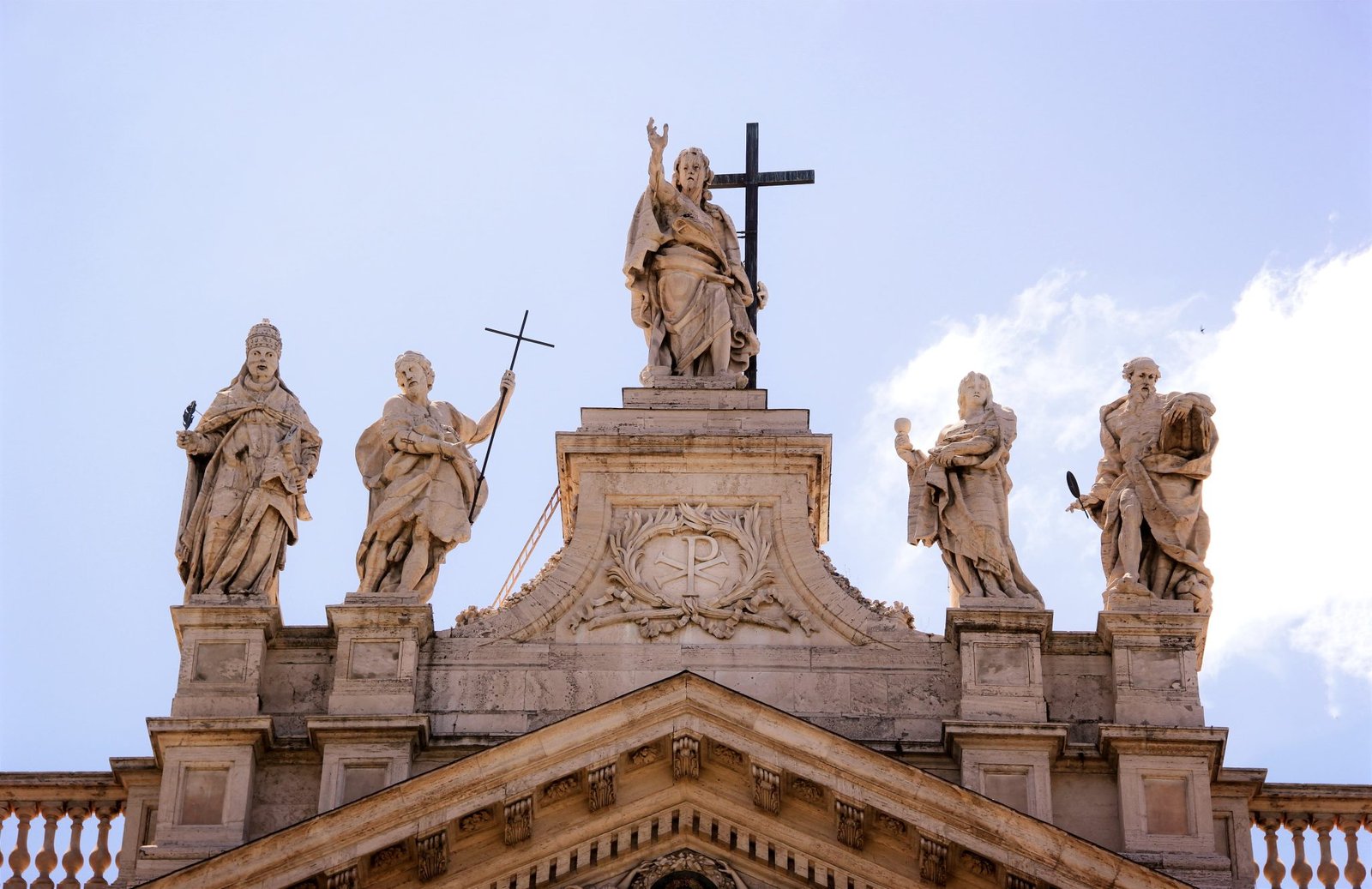
A summary of the book History of Christianity in Iran (third chapter)
The status of Christianity
There is no accurate information about the status of Christianity during the reign of the three kings who reigned after Shapur II. We only know that the persecution of Christians has stopped and Christians have started a more peaceful period. Among the people mentioned as leaders of the Iranian Church, one is (Tamrese) or (Tamuzeh) and the other is “Qayyomeh”.
Rest period
The period of the first Yazdgerd dynasty is the most peaceful and the best period of Christianity in the Sasanian rule. The Sassanid king not only consoled the Christians and their leaders and ordered the restoration of the Christian religious buildings, but also, like Constantine, ordered the formation of councils and supervised their progress.
The mission of Maruta, the Byzantine ambassador
The developments that took place in the Iranian church during this period of history are closely related to a person named Maruta. This person was one of the inhabitants of Mesopotamia and also the bishop of the city of Meifarqat or Miafarqin (near Diyarbakir today), which was located in the Eastern Roman Empire of Byzantium at that time.
The Roman (Byzantine) emperor sent Maruta at the head of a delegation to the court of Yazdgerd I to congratulate him on the beginning of his reign. It is confirmed in historical documents that Maruta was noticed by Yazdgerd. The reason for this could be his political prestige on the one hand, and his personal characteristics and expertise in medical knowledge on the other hand.
Socrates says that he was a doctor of Hazaqi and apparently cured Yazdgerd I of a chronic headache. It was narrated from the same historian that once when Yazdgerd went to worship at the fire temple, a voice came from the fire saying, “The king should be expelled from the fire temple as an infidel, because the leader respects the Christians.” Maruta, who knew that there was a conspiracy, requested the king that if he heard the sound again, he would order that the fire pit should be dug up. The same thing happened, and the trick of Moabdan was revealed, and the king ordered to kill them and issued a decree so that Maruta could build a church wherever he thought fit.
Marota and the council of 401
What is certain is that, coinciding with the beginning of the reign of Yazdgerd I and the mission of Maruta, the Christians of the Sassanid realm enjoyed remarkable freedoms. Marota’s positive and decisive role in this process seems certain. In the early years of the reign of Yazdgerd I, Qayumeh, the leader of the churches of the Sassanid Empire, requested the formation of a council to reorganize the churches of Iran after years of massacres and chaos caused by it. Maruta probably made the political environment favorable for the formation of this council.
Some researchers believe that Qayumeh asked for his resignation and despite the opposition of other bishops, he resigned from his position in favor of Bishop Ishaq. In any case, Ishaq, the new leader, immediately took care of the disorderly affairs of Iranian churches with the help of Bishop Marota. It should not go without saying that in his efforts, he faced opposition from those who wanted to sever the connection between the churches of Iran and the western church. However, Ishaq’s actions brought order to the damaged churches of Iran.
Maruta and the Council of Isaac (year 410)
The purpose of Maruta’s religious mission was to try to bring together the principles of beliefs of the Eastern and Western churches. The Sassanid king welcomed Maruta’s peaceful efforts. He first issued a decree of religious freedom for the Christians of Iran, similar to what Constantine had done in Rome in the early 4th century. That is why in the historical documents written by the Zoroastrians, they called him “criminal Yazdgerd”. But Christian historians have called him a just and infinitely kind and benevolent person.
Assistance to Yazdgerd
In order to implement this rapprochement and reconciliation, the king allowed Marota to form a council of bishops of Iranian churches to resolve issues. The king sent royal couriers to quickly convey the order of assembly to the bishops of the various cities. On January 6, 410 AD, the bishops gathered in the Church of Tisfon with special solemnity and listened to the letter of the “Fathers of the West” (January 6th is the traditional anniversary of the magi’s visit to the presence of the baby Jesus; the Armenian Gregory Church and some traditional churches, This day is also celebrated as the birthday of Christ).
The official council meeting was held on the first day of February 410. Two other meetings were held a few days apart in the same month. The king paid special attention to this council and his high-ranking representatives attended the meeting and communicated his approvals to the council. The king decreed that the decisions of the council should be implemented by the country’s executive branch, even if necessary, and the violators would be punished mercilessly.
Spiritual and moral condition
Even if we assume that the presence of Maruta in 399 was necessary to obtain freedom for the Christians of Iran and to settle the situation of the church from a political point of view, but when this freedom was given and the church felt that Yazdgerd adopted a mild and condescending policy Why did the Church of Iran itself not do anything? The reason for this should be sought in the spiritual and spiritual quality of the Church of Iran.
First, there were strong differences among the bishops. One of the goals of the Council of 410 was to establish order and unity, but this unity was mostly established among the bishops of the Mesopotamia region, we know that at least two opposing bishops were removed from their positions.
In Susa region, four bishops, due to their power and influence, did not go under the burden of the Council’s decisions and maintained their independence. This separation and fragmentation in the churches of the Sassanid Empire is one of the weak points of this church. Second, bishops (or priests) seem to have not benefited from sufficient knowledge.
Language issue
Here again, the writer finds it necessary to remind that the biggest weakness of the Iranian church was the issue of the language of the church, which always remained Syriac and the Pahlavi language was never recognized in it. It is natural that in such conditions, Christianity could not penetrate and develop among the Aryan tribes of the Iranian plateau. Perhaps in those days as well as today, Iranians considered Christianity to be a foreign and “Western” religion!
The spread of Christianity among Zoroastrians
The favors of Yazdgerd I caused the Christians to gain strength and spread Christianity among Iranians of Zoroastrian descent. Some people converted to Christianity using this freedom. The names and descriptions of these people that are available indicate that they were nobles, courtiers and mostly residents of the western regions of Iran or Mesopotamia. The conversion of such people to Christianity naturally caused the deep dissatisfaction of Mobdan and fanatical Zoroastrians with this situation, they considered Yazdgerd and his appeasement policy to be directly responsible for this situation.
The end of the reign of Yazdgerd I and Bahram Gore
The Christian leaders in the Sassanid realm felt very well that the policy of the Sassanid king towards the Christians would not always be so gentle and lenient. It was obvious that the Sassanid kings, who considered the Zoroastrian priests to be their most important support, would not be able to buy the satisfaction of the Christians and the Byzantine government for a long time at the cost of the hostility of the Zoroastrian priests.
It was natural that the situation would change one day and it did. Yazdgerd I was unhappy with the reports he received about the number of Zoroastrian converts to Christianity. However, he could not take back the provisions of the commitments he had announced during the Council of 410, but a situation arose that gave him the necessary excuse to place restrictions on Christianity.
From this time until the death of Yazdgerd I (late 420), it seems that some Christians of Zoroastrian descent were persecuted and executed. Among the remaining elegies, the sufferings of “Narsi”, a Zoroastrian priest of Ray descent, are very famous and moving. Bahram V, known as Bahram Gur, completely violated his father’s policy of appeasement and under the influence of Mobadan, he turned to persecution and murder of Christians. Greek Christian historians have written that the executioners of Sassanid government invented horrible methods to torture Christians and return them to their previous religion.
Nobles and courtiers of Zoroastrian descent who had converted to Christianity were arrested and asked to renounce their new faith. If they refused to do so, they would be subjected to horrific tortures, confiscation of property, and gradual death with mind-boggling tortures. In the remaining hadiths, we come across the names of many of these martyrs, among them are Mehrshapour, Pirouz of Gandishapur, Yaqoob Mothlesheshde, Yaqoob Doftdar Darbar, Hormoz, Suen, and Benyamin.
In the book “Acts of David” it is stated that not all Christians followed the example of these heroes, “but many returned from the faith, a few kept the confession of faith, and many fled their country or went into hiding.”
Today in the article : Ali Vahidi: A summary of the book History of Christianity in Iran (third chapter) We reviewed useful information about the Bible and the way of Jesus. If you wish, you can view other articles of Ali Vahidi about Christianity






